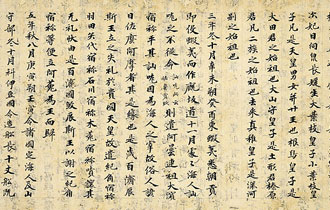Pages
|
If the high art of haiku can be said to have begun with Bashō, it certainly did not end there. He had many disciples, and many admirers since his own lifetime, and those who enjoy this form will enjoy reading of many of their poems. There are excellent translations of the writings of Yosa Buson (1716-1783), of Kobayashi Issa (1763-1827), and in the modern period, of Masaoka Shiki (1867-1902), Taneda Santōka (1882-1940), and many others, right down to the present day.
The art of haiku is still very much alive. The very surface simplicity of the form allows persons of even modest poetic experience to try to write poems, and the more relaxed rules adopted by various reform movements in the twentieth-century have made new, sometimes daring experiments possible. In the end, however, whether or not they make direct use of Bashō's poetics, modern and contemporary haiku poets are happy to acknowledge Bashō as the father of the form; they either accept him, as a good son or daughter might be expected to do, or rebel against him. But they cannot forget Bashō.
J. Thomas Rimer
Pages
|











